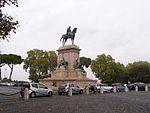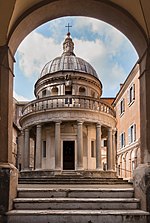American University of Rome
The American University of Rome (commonly referred to as AUR) is a degree-granting American university in Rome, Italy. AUR is accredited by the Middle States Commission on Higher Education in the United States and is recognized by the Italian Ministry of Education as an American University duly authorized to operate in Italy as a Foreign Higher Education Institution. The American University of Rome's degrees, accompanied by a Statement of Comparability or a Dichiarazione di Valore (Certified Degree Equivalency) is valid for admission to Italian graduate degree programs such as the laurea magistrale or Italian first level Master programs. The school was founded in 1969, making it the oldest American degree-granting university in Rome. AUR is situated near the center of Rome on the Janiculum hill in the Monteverde Vecchio neighborhood, and has a total student enrollment of around 600. The language of instruction is English.
Excerpt from the Wikipedia article American University of Rome (License: CC BY-SA 3.0, Authors).American University of Rome
Via Pietro Roselli, Rome Municipio Roma I
Geographical coordinates (GPS) Address Phone number External links Nearby Places Show on map
Geographical coordinates (GPS)
| Latitude | Longitude |
|---|---|
| N 41.8857 ° | E 12.4623 ° |
Address
The American University of Rome
Via Pietro Roselli 4
00153 Rome, Municipio Roma I
Lazio, Italy
Open on Google Maps










